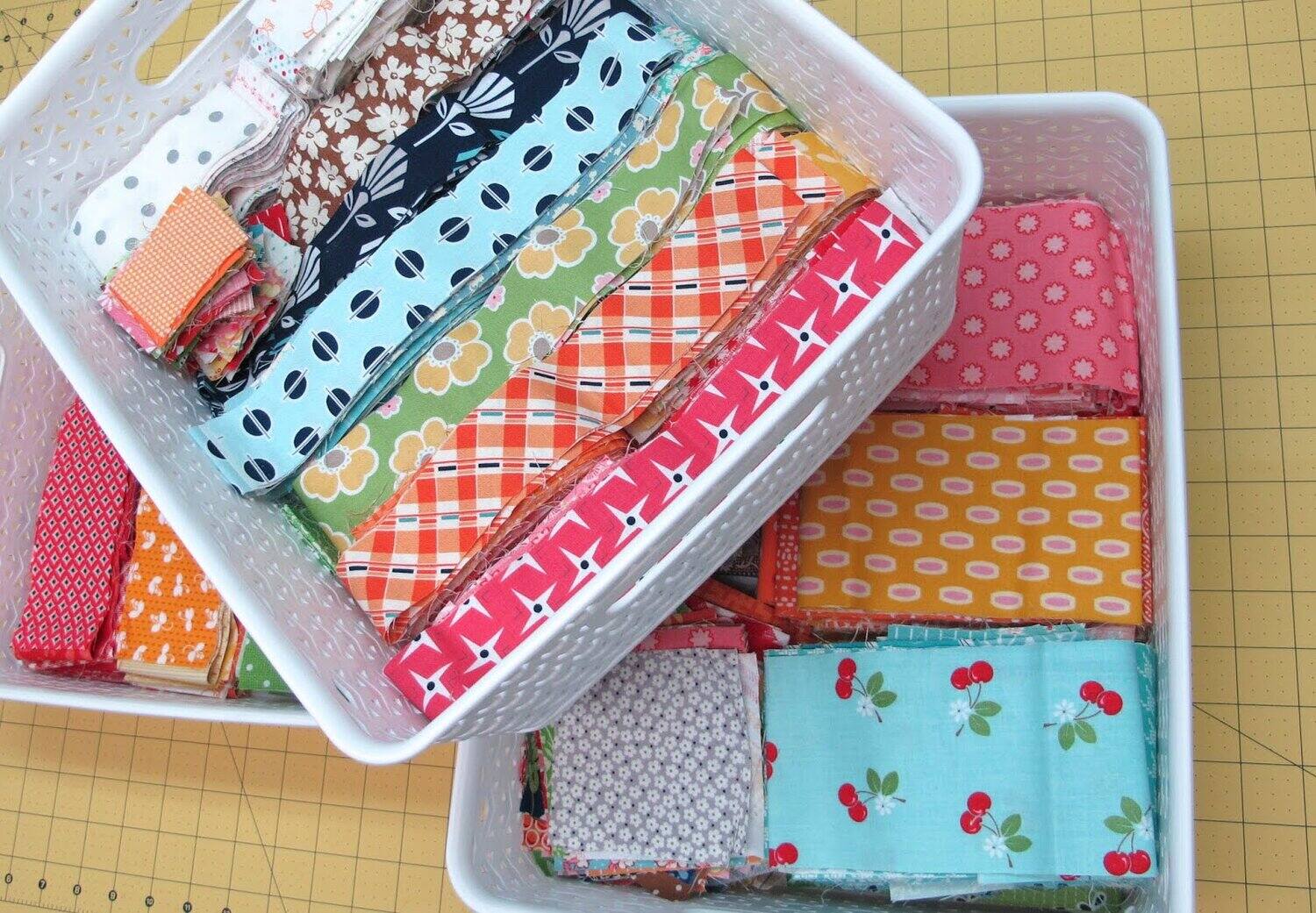

Articles
How To Store Fabric Scraps
Modified: January 21, 2024
Learn effective ways to store fabric scraps and keep your articles organized. Find tips and ideas on how to maximize space and minimize clutter.
(Many of the links in this article redirect to a specific reviewed product. Your purchase of these products through affiliate links helps to generate commission for Storables.com, at no extra cost. Learn more)
Introduction
As a passionate crafter or seamstress, you probably have accumulated a collection of fabric scraps over time. These small pieces of fabric, too precious to throw away, can quickly pile up and become disorganized if not properly stored. The key to maintaining a tidy crafting space is to have a systematic approach to storing your fabric scraps.
In this article, we will explore effective strategies for sorting, organizing, and storing fabric scraps. We will also discuss various containers and storage solutions that can help you maximize your storage space and keep your fabric scraps easily accessible.
By implementing these storage techniques, you can not only keep your fabric scraps neatly organized but also save time when searching for the perfect piece for your next project. Let’s dive in and discover how to store fabric scraps effectively.
Key Takeaways:
- Efficiently store fabric scraps by sorting them by color, fabric type, and size. Utilize clear plastic bins, fabric baskets, and hanging organizers to maximize space and keep your crafting area tidy and inspiring.
- Maintain an organized fabric scrap storage system through regular sorting, decluttering, and proper folding techniques. Label your fabrics and implement an inventory system to streamline your creative process and prevent duplication.
Read more: How To Store Food Scraps For Compost
Sorting and Organizing Fabric Scraps
When it comes to organizing fabric scraps, one of the most effective methods is to sort them based on different criteria. This not only helps to keep your scraps in order but also makes it easier to find the perfect fabric for your next project. Here are three key ways to sort and organize your fabric scraps:
By Color
Sorting fabric scraps by color is a popular way to organize them aesthetically. Organizing your scraps by color allows you to easily find the shade you need when working on a specific project. One approach is to use clear storage bins or containers with dividers, separating scraps by color family. Alternatively, you can use individual labeled folders or bags for each color, and arrange them in a designated box or drawer.
By Fabric Type
Another effective method of sorting fabric scraps is by fabric type. By keeping similar fabrics together, you can quickly locate a specific material when needed. Consider using separate containers or bins for different fabric types, such as cotton, linen, silk, or wool. You can further organize each container by color or pattern for added convenience. This approach is particularly useful if you work with a variety of fabric types and want to keep them well-organized.
By Size
Sorting fabric scraps by size is another practical way to store them efficiently. Categorizing your scraps by size ensures that you can access the right piece for your project without rummaging through a pile of various sizes. Using clear plastic bags or compartments with adjustable dividers is an excellent solution for this method. Label each section according to the size range of the scraps it holds, such as small, medium, and large. This way, you can easily identify the size you need without any hassle.
By implementing these sorting methods, you can transform a chaotic pile of fabric scraps into an organized collection. This organization not only saves you time but also sparks creativity as you can quickly see and access the fabrics you have available for your projects. Now that we’ve sorted our scraps, let’s explore some containers and storage solutions to keep them neatly arranged.
Read more: How To Store Wood Scraps
Containers for Fabric Scrap Storage
Once you have sorted your fabric scraps, it’s important to find suitable containers that will keep them organized and easily accessible. There are various types of containers available that are specifically designed for fabric scrap storage. Let’s explore some popular options:
Clear Plastic Bins
Clear plastic bins are a practical and affordable choice for storing fabric scraps. With their transparent design, you can easily see the contents of each bin without having to open them. This makes it convenient to locate the specific fabric you need. Additionally, these bins come in various sizes, allowing you to separate and organize your scraps based on your sorting criteria, whether it’s color, fabric type, or size. Stackable bins are also available, maximizing your storage space.
Fabric Baskets
Fabric baskets offer both functionality and aesthetics when it comes to storing fabric scraps. These baskets come in a variety of sizes and materials, allowing you to choose based on your personal preference and the style of your crafting space. Fabric baskets can be placed on shelves or in cubbies, providing a visually pleasing storage solution. Some baskets even have divided compartments, allowing you to further organize your fabric scraps by color or size.
Shoe Organizers
Shoe organizers may seem like an unconventional choice for fabric scrap storage, but they are surprisingly effective. Hanging shoe organizers with clear pockets provide an excellent way to store and organize your fabric scraps. The pockets can be labeled or color-coded, making it easy to find the desired fabric. Hang the shoe organizer on the back of a door or on a wall, keeping your scraps off the floor and creating extra storage space in your craft room.
Read more: How To Store Scrap Wood In Garage
Hanging Garment Bags
Hanging garment bags are not just for clothing storage but can also be used to store fabric scraps. These bags typically have multiple compartments or pockets, allowing you to organize your scraps by color, fabric type, or size. Hanging garment bags are a versatile option, as they can be hung on a clothing rack, the back of a door, or inside a closet. This storage solution keeps your fabric scraps visible and easily accessible while protecting them from dust and wrinkles.
Depending on your storage needs and the available space in your craft room, choose the container that best suits your preferences. With these containers, you can ensure your fabric scraps are neatly organized and preserved for future projects. Now that you have chosen your containers, let’s explore folding techniques to maximize your storage space.
Folding Techniques
Properly folding your fabric scraps is crucial for efficient storage. By utilizing effective folding techniques, you not only maximize your storage space but also keep your fabric scraps neat and easily accessible. Let’s explore two popular folding techniques:
KonMari Method
The KonMari method, popularized by organizing expert Marie Kondo, focuses on decluttering and organizing. This folding technique ensures that your fabric scraps are organized in a way that allows you to see each piece at a glance. Here’s how to fold using the KonMari method:
- Start by laying your fabric scrap flat on a clean surface.
- Fold one side of the fabric to the center, then fold the other side to meet the first fold.
- Fold the bottom of the fabric up in thirds, creating a rectangular shape.
- Continue folding the fabric from the bottom to the top, creating a compact, neat rectangle.
- Finally, stand the folded fabric upright in your chosen storage container or stack them horizontally if space permits.
The KonMari method allows you to easily see and access your fabric scraps while keeping them organized and compact. This technique is particularly useful when storing smaller fabric scraps.
Roll and Store
Rolling your fabric scraps is another efficient way to store and organize them. This technique works well for larger fabric pieces and helps to prevent wrinkles and creases. Follow these steps to roll and store your fabric scraps:
- Lay the fabric flat on a clean surface.
- Starting from one end, roll the fabric tightly into a cylinder shape.
- Secure the rolled fabric with a piece of string or a fabric tie.
- Place the rolled fabric in your storage container, standing it upright or stacking them horizontally.
Rolling your fabric scraps not only saves space but also allows you to easily see the different patterns or designs on each roll. It is a particularly effective method when you have limited storage space or want to store your fabric scraps in a portable manner.
By utilizing these folding techniques, you can efficiently store your fabric scraps while keeping them organized and easily accessible. Now that you know how to fold your fabric scraps, let’s explore labeling and inventory systems to further enhance your storage organization.
Read more: How To Store Fabric
Labeling and Inventory System
Labeling your fabric scraps and implementing an inventory system can greatly enhance the organization of your storage space. With clear labels and an inventory system in place, you can quickly locate specific fabrics, keep track of your inventory, and avoid duplication. Here are some tips for effective labeling and inventory management:
Labeling
When labeling your fabric scraps, be sure to include key information that will help you identify and locate the fabrics easily. Here are some important details to consider including on your labels:
- Fabric type (cotton, silk, linen, etc.)
- Color or pattern
- Size or dimensions
- Special characteristics or motifs
- Date acquired or project associated with the fabric
You can create your own labels using adhesive tags or labels, or even use small pieces of fabric with the information written or printed on them. Attach the labels securely to your fabric scraps, making sure they are visible and easily readable.
Inventory System
Implementing an inventory system for your fabric scraps helps you keep track of what you have and avoid purchasing duplicate fabrics. There are several approaches you can take to create an inventory system:
- Spreadsheet: Create a spreadsheet on your computer or use a mobile app to list each fabric scrap along with its corresponding details, such as fabric type, color, and size. You can also include a column for notes or additional information.
- Physical Catalog: Create a physical catalog by organizing your fabric scraps in a binder or folder. Take pictures of each fabric scrap and attach them to individual pages, along with the relevant information written below the picture.
- Online Tools: Take advantage of online platforms or apps designed specifically for fabric inventory management. Some of these tools allow you to upload pictures, add details, and even track your fabric usage for different projects.
Choose the inventory system that aligns with your personal preferences and works best for your needs. Be sure to update your inventory regularly as you acquire new fabric scraps or use existing ones for projects.
By labeling your fabric scraps and implementing an inventory system, you can streamline the organization of your storage space and easily locate the fabrics you need for your projects. Now that we have explored labeling and inventories, let’s discuss creative storage ideas for small spaces.
Creative Storage Ideas for Small Spaces
When you’re dealing with limited storage space, it’s essential to get creative and utilize every available area to store your fabric scraps efficiently. Here are three creative storage ideas for small spaces:
Read more: How To Scrap A Refrigerator
Utilizing Wall Space
One of the most underutilized storage areas in a craft room is the wall space. Consider installing shelves, pegboards, or gridwall panels on your walls to hang and display your fabric scraps. You can use hooks or clips to hang small fabric pieces individually or place fabric bundles in decorative baskets or bins on the shelves. By utilizing vertical storage, you maximize your space and keep your fabric scraps easily accessible and visually appealing.
Underbed Storage Solutions
If you’re looking to make the most of every inch of storage space, consider utilizing the space under your bed. Use shallow clear plastic containers or fabric bins specifically designed for underbed storage. Sort and organize your fabric scraps in these containers based on your preferred criteria, such as color or fabric type. This solution allows you to keep your fabric scraps neatly stored away, yet easily accessible when you need them.
Hanging Fabric Scrap Organizers
If you have limited floor space, consider utilizing hanging fabric scrap organizers. These organizers typically have multiple pockets or compartments to store and display your fabric scraps. Hang the organizer on the back of a door or on the wall, providing easy access to your fabric collection without taking up precious floor space. Some fabric scrap organizers even have clear pockets, allowing you to see the fabric scraps at a glance.
These creative storage ideas not only help you maximize the storage space in your craft room but also add a decorative element to your space. Remember to assess your specific storage needs and choose the solutions that work best for you and your available space.
Now that we have explored creative storage ideas, it’s important to discuss maintaining your fabric scrap storage to keep it organized. Let’s dive into some tips for maintaining your storage system.
Maintaining Fabric Scrap Storage
Maintaining an organized fabric scrap storage system is essential to ensure that it remains functional and efficient. Here are two key tips for maintaining your fabric scrap storage:
Read more: How To Store Quilting Fabric
Regular Sorting and Decluttering
To prevent your fabric scraps from becoming overwhelming and disorganized, it is crucial to establish a routine of regular sorting and decluttering. Set aside dedicated time every few months to go through your fabric scraps and assess what you still need and what can be let go. Separate the scraps that are no longer usable or no longer align with your current projects, and either donate them or recycle them responsibly. This process helps to free up space for new fabric scraps and keeps your storage system streamlined.
When sorting your fabric scraps, follow the sorting criteria you established earlier, such as organizing by color, fabric type, or size. Take the time to reevaluate your organization system and make any necessary adjustments to ensure it still meets your current needs. Regular sorting not only keeps your storage system organized but also allows you to rediscover forgotten fabrics that can inspire new projects.
Proper Folding and Storing Techniques
The way you fold and store your fabric scraps plays a significant role in maintaining an organized storage system. Make sure to use the folding techniques discussed earlier, such as the KonMari method or rolling and storing, to keep your fabric scraps compact and tidy. Folded fabrics should be stacked vertically or horizontally in your chosen containers, depending on your space constraints.
Additionally, resist the temptation to overstuff your storage containers. It’s important to leave room for air circulation and easy access to your fabric scraps. Avoid cramming too many scraps into one container, as it makes it difficult to find specific fabrics and can lead to unnecessary wrinkling or damage.
Regularly assess the condition of your storage containers as well. If you notice any cracks, damage, or signs of wear, replace them promptly to prevent any fabric scraps from getting damaged or lost.
By regularly sorting and decluttering your fabric scraps and using proper folding and storing techniques, you can maintain an efficient and organized storage system. This will ensure that your fabric scraps remain easily accessible and in good condition for all your crafting endeavors.
Having an organized fabric scrap storage system not only saves you time and frustration when searching for the right piece for your project, but it also allows you to make the most of your fabric scraps and encourages creative inspiration. With these maintenance tips in mind, you can enjoy a well-organized craft space and continue to bring your creative vision to life.
Now that you have learned how to maintain your fabric scrap storage, you are equipped with the knowledge to keep your crafting space organized and your fabric scraps easily accessible. Happy crafting!
Conclusion
Organizing and storing fabric scraps may seem like a daunting task, but with the right strategies and techniques, it can become a manageable and enjoyable process. By sorting your fabric scraps by color, fabric type, and size, you can easily locate the perfect piece for your next project. Utilizing appropriate containers, such as clear plastic bins, fabric baskets, shoe organizers, or hanging garment bags, helps maximize storage space and keeps your fabric scraps neatly arranged.
Folding your fabric scraps using methods like the KonMari method or rolling and storing allows for efficient use of space and easy visibility. Labeling your fabric scraps and implementing an inventory system ensures that you can quickly locate fabrics and avoid purchasing duplicates. If you have limited storage space, get creative by utilizing wall space, underbed storage solutions, or hanging fabric scrap organizers to optimize your storage potential.
Maintaining fabric scrap storage requires regular sorting, decluttering, and proper folding and storing techniques. By periodically going through your fabric scraps and assessing what to keep, donate, or recycle, you can prevent clutter and make room for new inspirations. Keeping your fabrics neatly folded and stored in appropriate containers helps maintain an organized system and protects your fabric scraps from damage.
Remember, an organized fabric scrap storage system not only saves you time and frustration, but it also enhances your creativity. Being able to easily locate and access your fabric scraps allows you to embark on new projects with enthusiasm and ease.
Now that you have learned the techniques and strategies for organizing and storing fabric scraps, it’s time to put them into practice. Create a system that best suits your needs, personal style, and available space. Embrace the joy of a well-organized craft room and enjoy the endless possibilities that your fabric scraps have to offer in your creative endeavors.
So go ahead, sort, fold, label, and maintain your fabric scrap storage with care and creativity. Let your organized storage system become a source of inspiration and a foundation for your crafting adventures. Happy creating!
Frequently Asked Questions about How To Store Fabric Scraps
Was this page helpful?
At Storables.com, we guarantee accurate and reliable information. Our content, validated by Expert Board Contributors, is crafted following stringent Editorial Policies. We're committed to providing you with well-researched, expert-backed insights for all your informational needs.
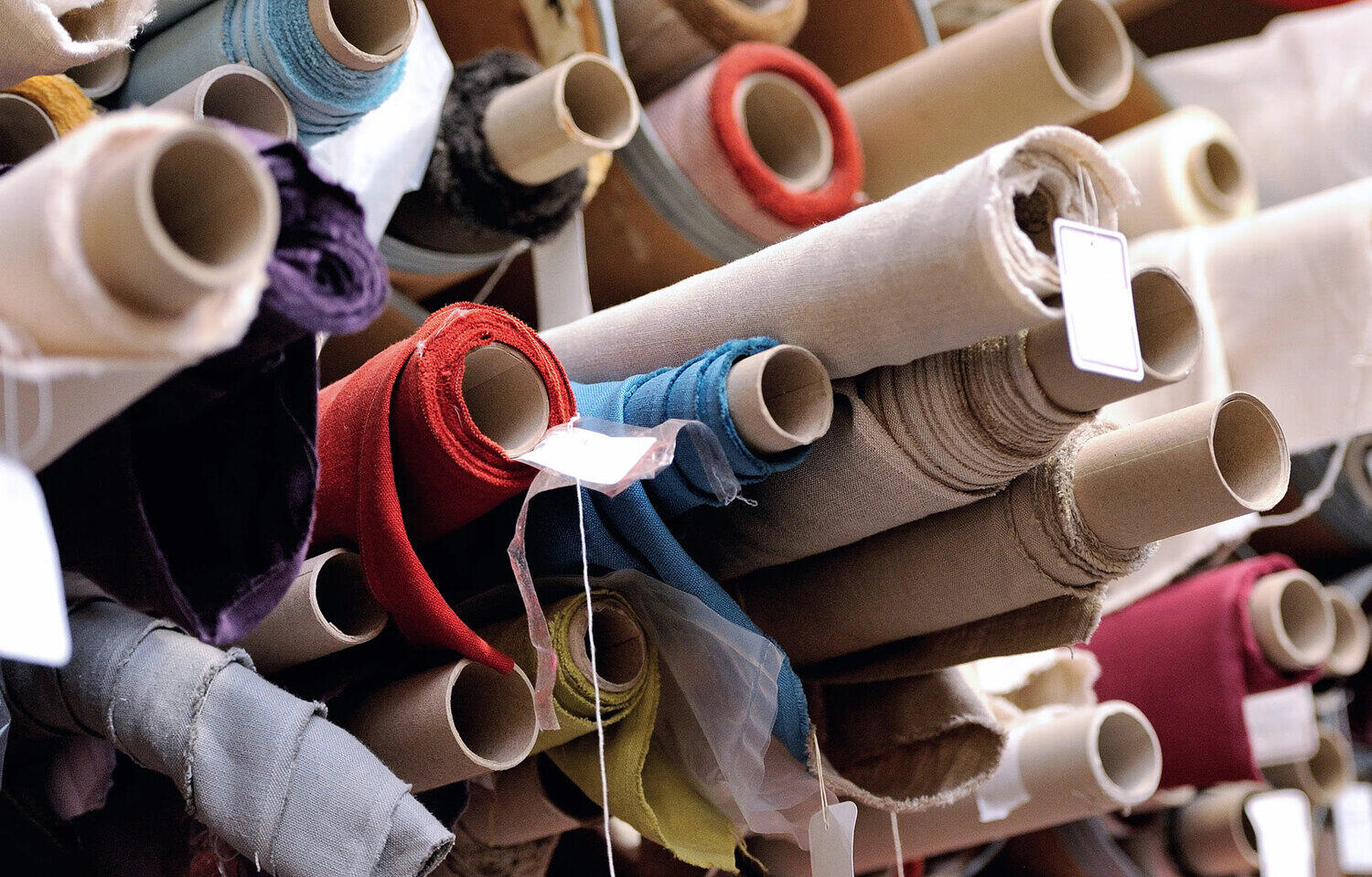
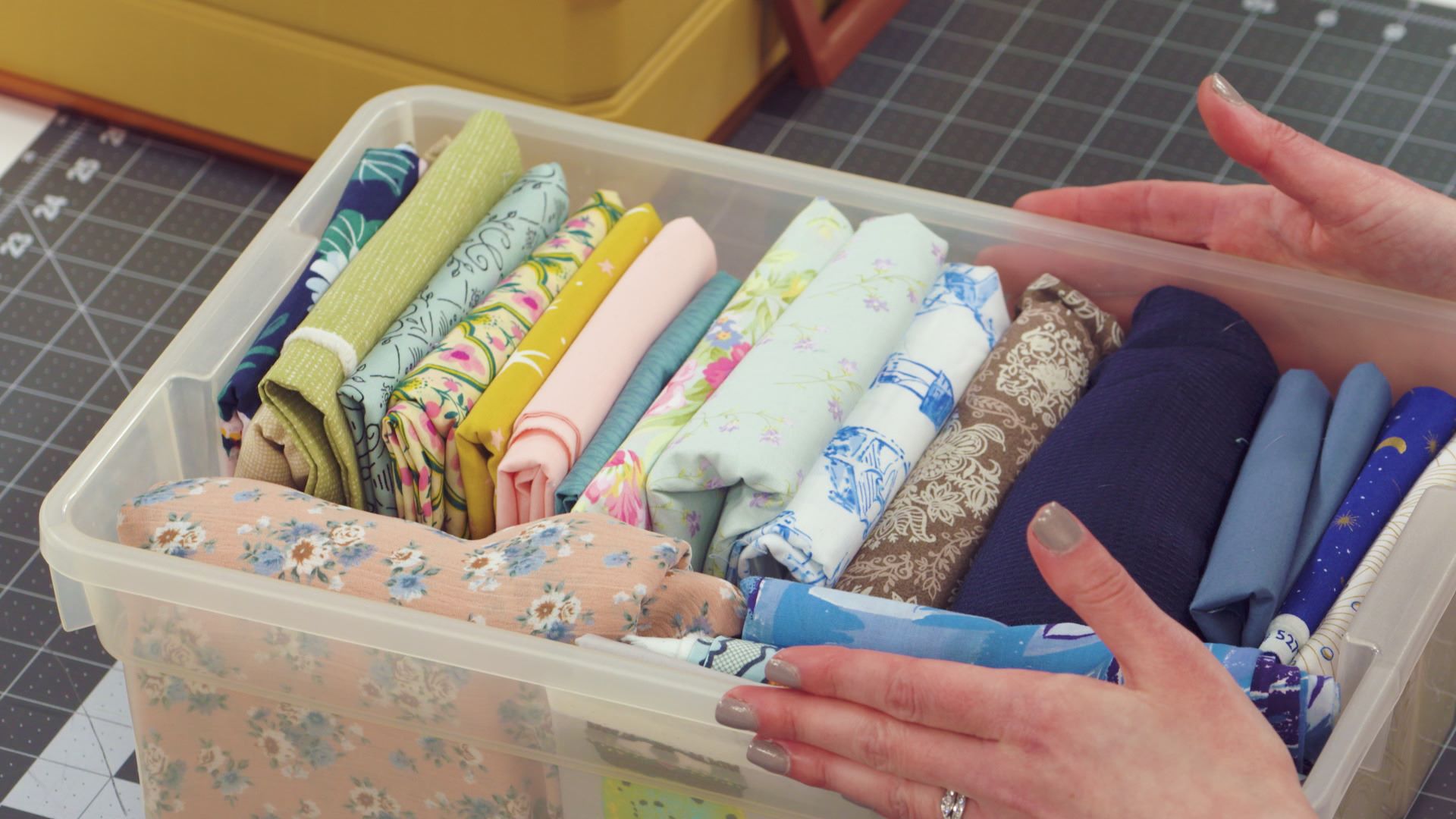
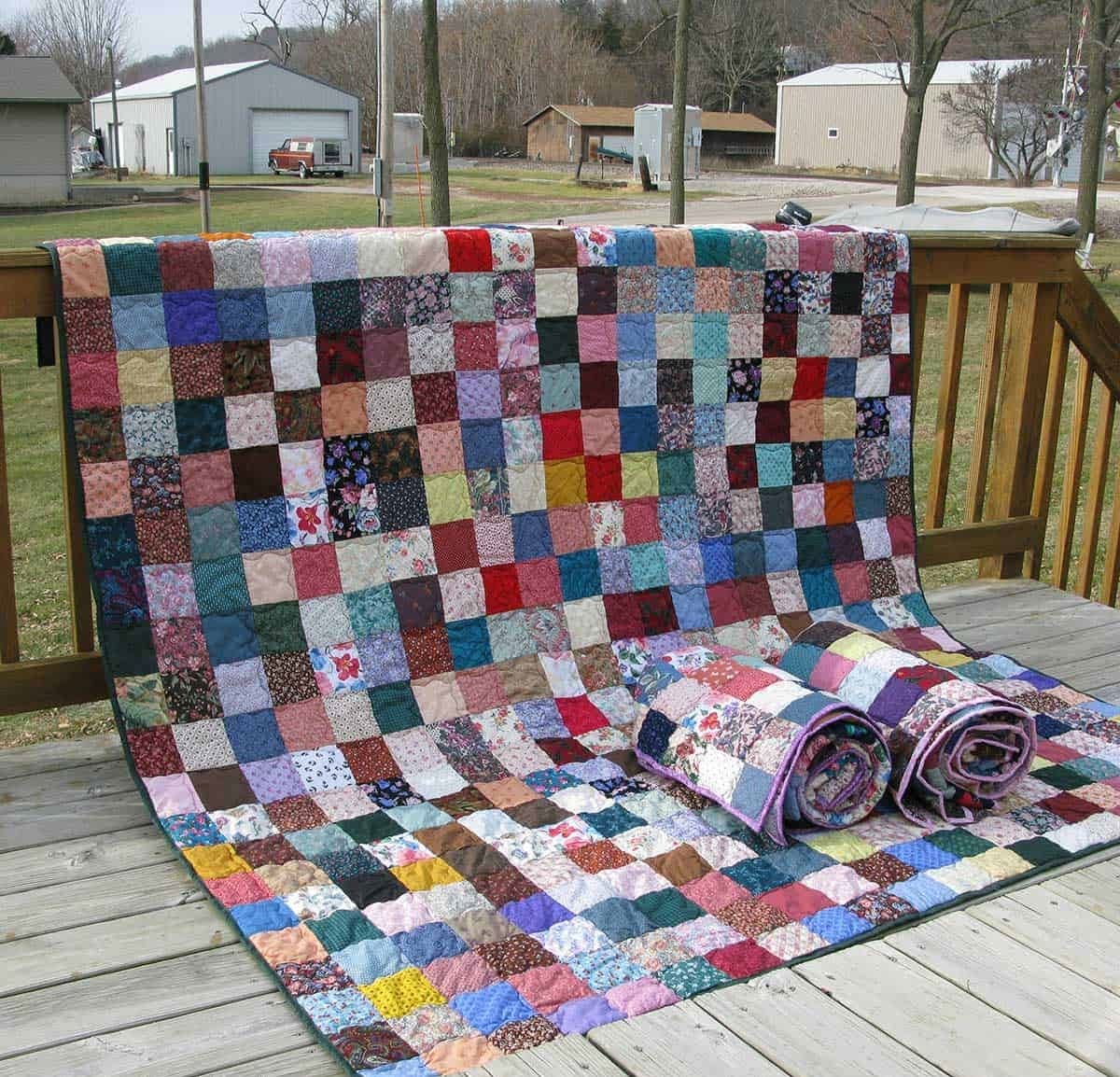
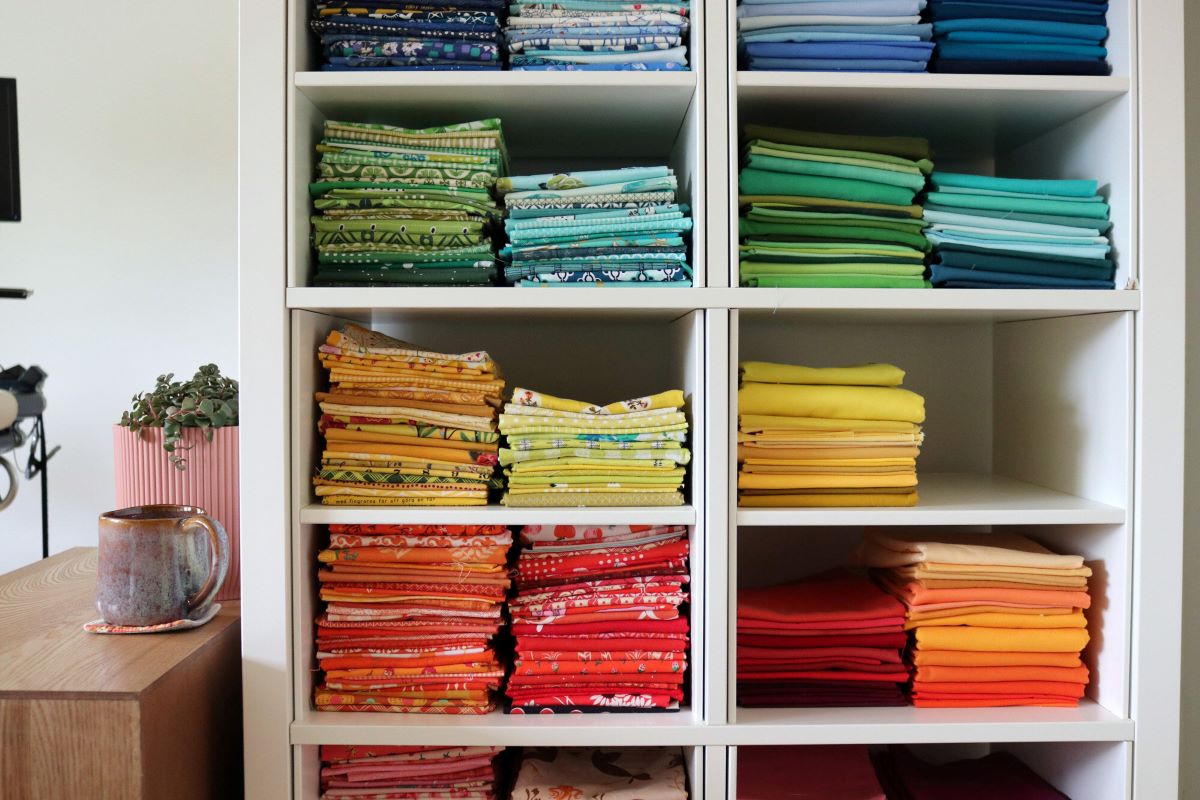


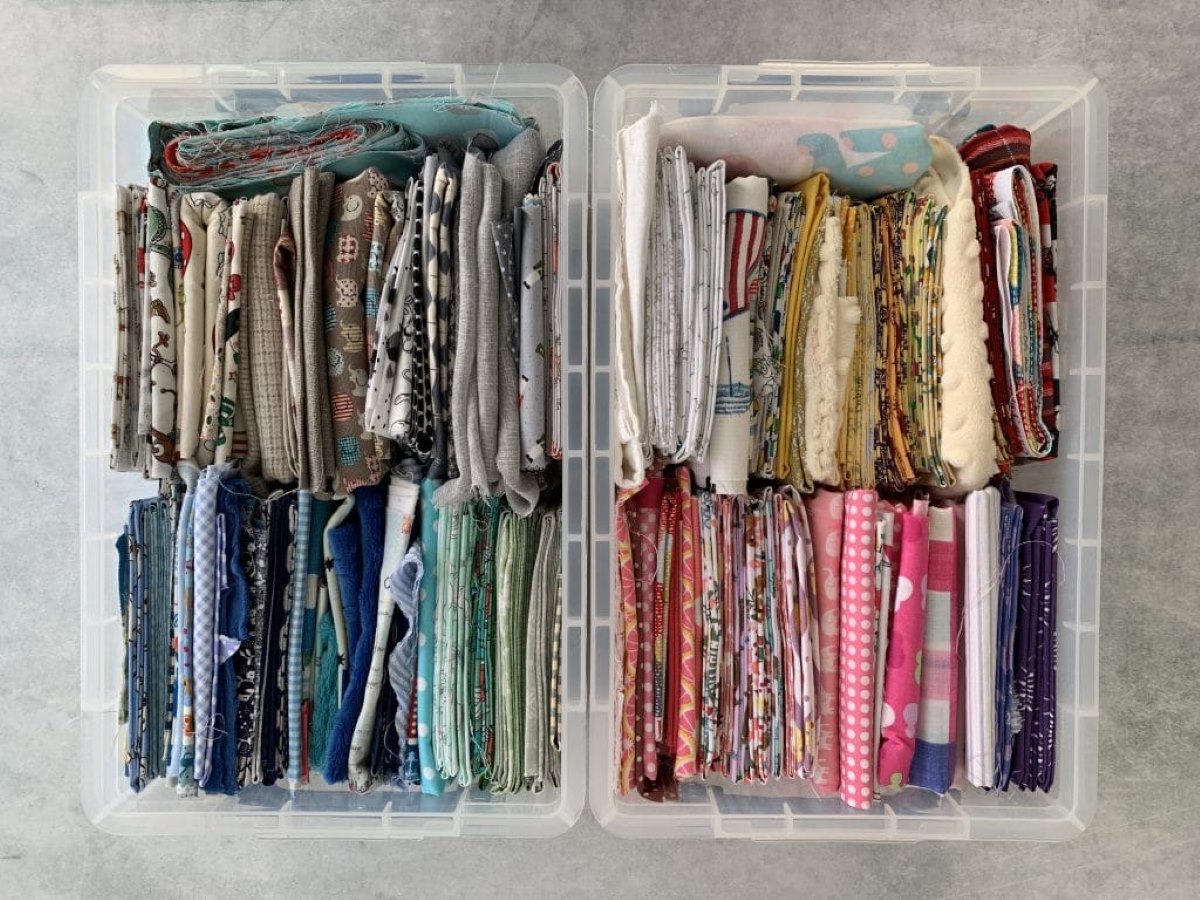
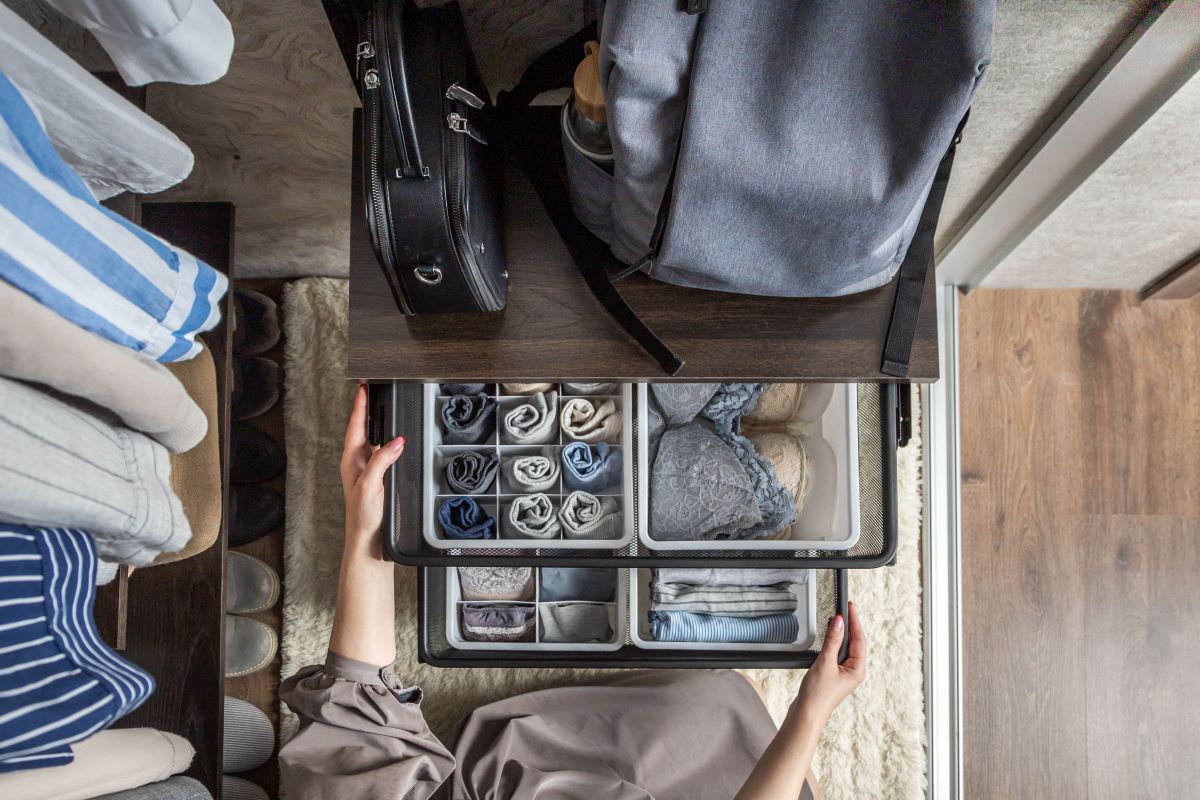
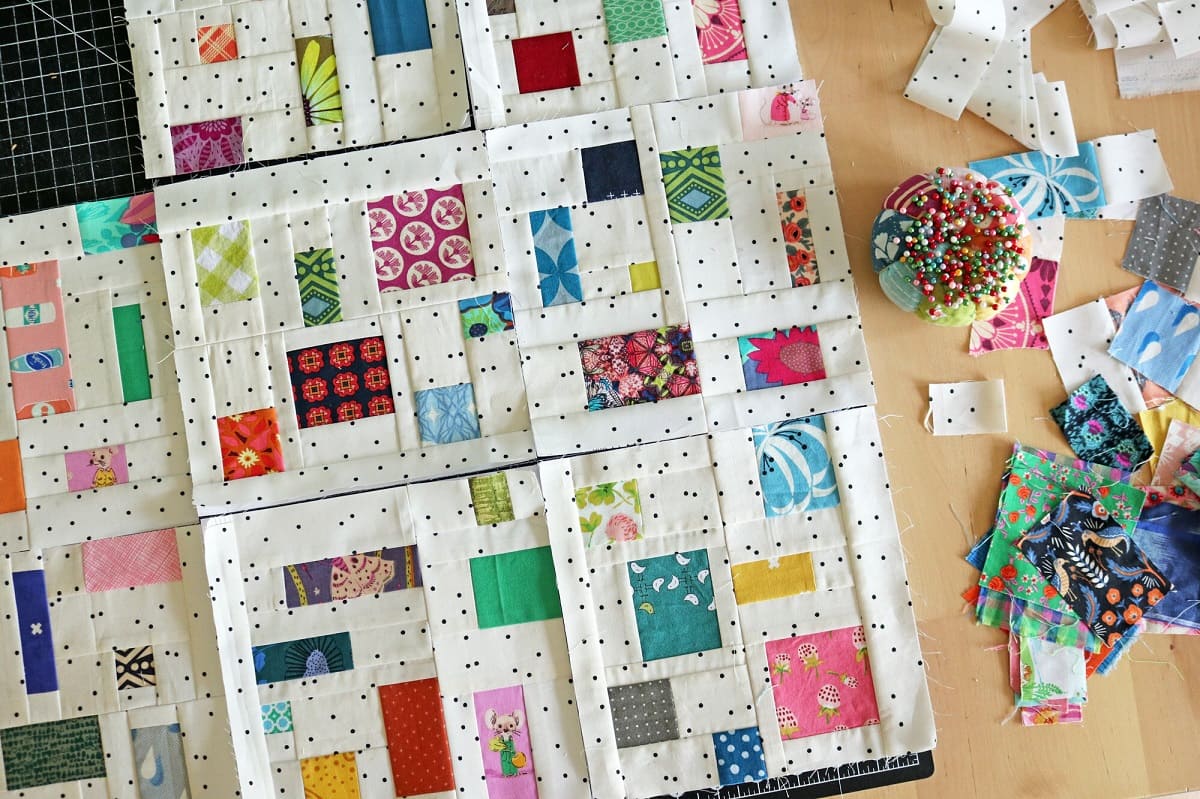
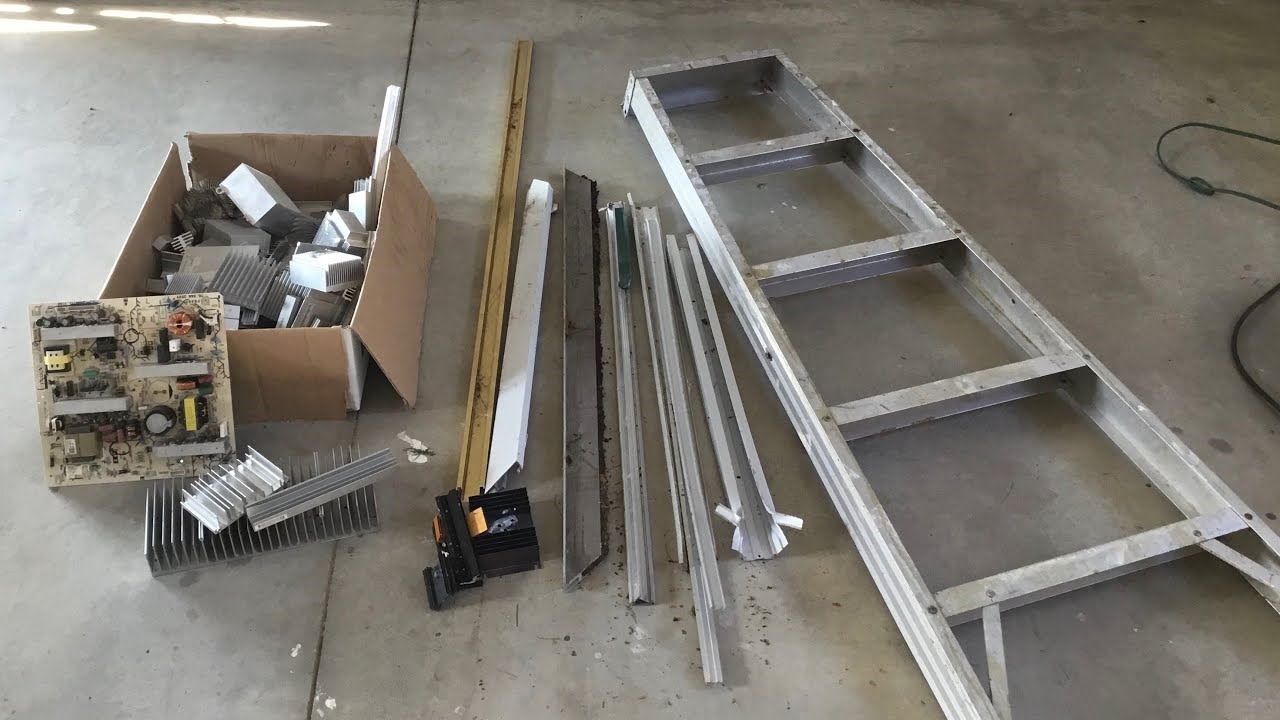

0 thoughts on “How To Store Fabric Scraps”